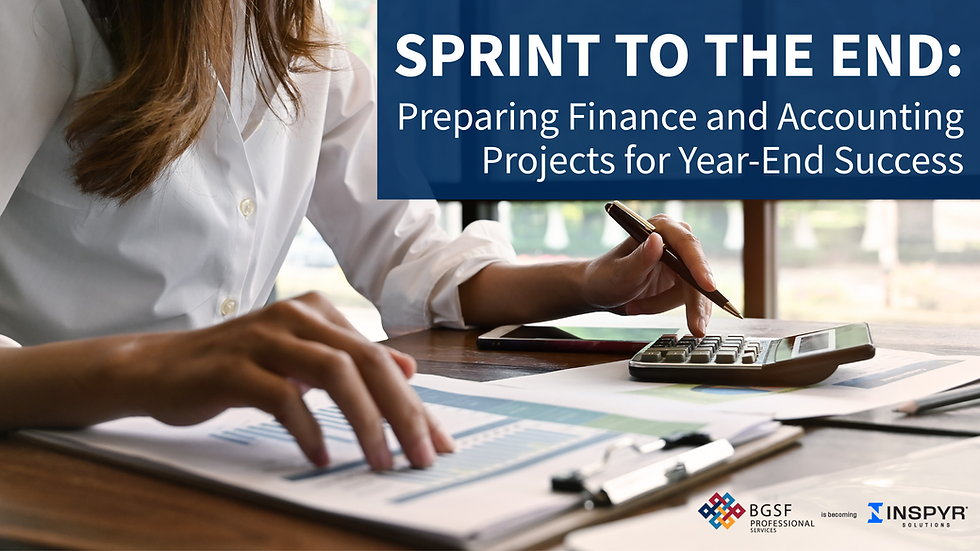Data Readiness and Dashboard Optimization: Setting Finance Up for 2026
- bberrodin
- Sep 24
- 2 min read

As 2025 enters its final quarter, finance leaders are already looking ahead to 2026 with a sharper focus on how they can leverage data for decision-making. In a landscape shaped by rising interest rates, shifting regulations, and global economic uncertainty, one theme stands out: organizations that invest in data readiness and dashboard optimization will be better equipped to act with agility and confidence.
Why Data Readiness Matters
Finance has always relied on accurate numbers, but the demands of today’s business environment raise the bar:
Timeliness: Real-time reporting is now expected by leadership and stakeholders.
Accuracy: Poor-quality data leads to misinformed decisions, compliance risks, and missed opportunities.
Accessibility: Decision-makers across the organization need financial insights in a digestible, actionable format.
Data readiness means ensuring that the financial data feeding your systems is clean, consistent, and aligned across functions, from accounting and FP&A to operations and HR.
Dashboard Optimization: From Static Reports to Strategic Tools
Even the most accurate data loses value if it’s not presented effectively. Dashboards should go beyond static snapshots and evolve into strategic tools that provide clarity and foresight. Best practices include:
Prioritize KPIs that matter: Too many metrics clutter the story. Focus on what drives revenue, cost efficiency, and cash flow.
Enable drill-down functionality: Leaders should be able to move seamlessly from high-level trends to transaction-level details.
Design for accessibility: Intuitive visuals, plain-language labeling, and mobile optimization make dashboards useful to non-financial stakeholders.
Integrate predictive analytics: AI and machine learning can help forecast scenarios, highlight anomalies, and flag potential risks before they escalate.
Preparing Now for 2026
To ensure your finances are ready, consider these action steps:
Audit your current data environment: Identify silos, inconsistencies, or manual processes that slow down reporting.
Clean and govern your data: Establish clear ownership, definitions, and quality standards.
Upgrade your dashboard strategy: Revisit whether your current tools answer the right business questions.
Invest in talent and training: Dashboards are only as effective as the people who use them. Upskilling finance teams in data literacy pays long-term dividends.
Partner strategically: External experts can help accelerate data readiness and dashboard optimization, ensuring finance has the tools to adapt as 2026 unfolds.
Focusing on the Year Ahead
The year ahead will demand resilience and precision from finance leaders. By focusing now on data readiness and dashboard optimization, organizations will not just react to 2026; they will shape it. Clean, reliable data combined with strategic dashboards can transform finance into a proactive driver of business growth, rather than a reactive reporting function.
BGSF partners with organizations to deliver expert consultants, skilled talent, and project support that drive year-end success. From reconciliations to budgeting and forecasting, our team provides the extra support you need to stay compliant, meet deadlines, and finish the year strong. Connect with us today.



Comments